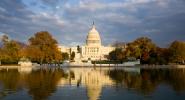Building RGV infrastructure up
 |
Building up the Rio Grande Valley’s infrastructure may be among our region’s single greatest imperatives to keeping pace with our exploding population growth and booming economy. The solution is expensive. However, it is manageable as long as we maintain a firm commitment to free trade, sufficient funding at each level of government and a long-term strategy envisioning the future of the Rio Grande Valley as the epicenter of global innovation in science and technology.
As a business owner, congressman and Rio Grande Valley resident, I have seen the positive impacts that open, free and fair trade has had on Texas and our region. Its proven success has transformed our border economy and it has also been a contributing factor toward post-recession economic recovery. The facilitation of trade through strong infrastructure investments has boosted economic development, reduced our unemployment rate from double digits to single-digits, and provided greater paying opportunities for all.
I have always supported free trade and commerce and I have fought and voted against some of my Democratic and Republican colleagues who oppose free trade agreements (FTA). I understand their concerns and recognize that their constituents may worry that they may lose their jobs due to bad trade deals. Still, I am convinced that positive, free and fair trade deals are achievable, specifically through effective bilateral and multilateral trade agreements. These FTAs have proven to create jobs and increase commerce domestically.
As a result of trade between our neighbors to the north and south, commerce has exploded in the Rio Grande Valley. According to the Office of the U.S. Trade Representative, the McAllen-Edinburg-Mission Metropolitan Statistical Area (MSA) has grown from exporting $3.168 billion in 2005 to $5.327 billion in 2015. To sustain the exploding population accompanying this fiscal growth, we must continue to invest heavily in the transportation infrastructure that not only supports rapidly increasing traffic on our roads, bridges, and airports, but also in infrastructure that delivers economic goods to consumers nationwide and internationally.
That is why I am a proud champion for interstate highways, overpasses and bridges. I fought to improve and elevate I-69, I-2, and US Highway 88 to interstate standards. These much-needed enhancements were directly responsible for the economic development that helped raise the quality of life for millions of people across Texas — many of whom fall under the national poverty level.
Demand and trade continue to expand. In 2014, the Pharr–Reynosa International Bridge generated over $30 billion in annual trade, ranking as the seventh largest land port in the United States. The Texas A&M Center for North American Studies predicts a 62 percent increase by 2020 in produce imports from Mexico through South Texas. Innovative infrastructure development, including the addition of Pharr’s cold storage facility, will help meet the demand and solidify its hold as the bridge with the highest volume of fresh fruits and vegetable imports nationwide.
In my first term, I helped secure a presidential permit for the development of the Anzalduas International Bridge. I am also proud to have helped replace the lost presidential permit for the Donna-Rio Bravo International Bridge, as well as $23.3 million in funding for its construction. The bridges opened in 2009 and 2010, respectively, and they were both approved for commercial southbound traffic in 2016. This latest development will greatly alleviate existing congestion and improve trade by reducing bridge wait-times. Together, these bridges are examples of international friendship and progress.
Also, expansion of the McAllen-Miller International Airport has overtaken the regional airports in Harlingen and Brownsville to become the leader in passengers boarding commercial and cargo traffic and capacity. Additionally, the International Boundary and Water Commission is nearing completion of the process to initiate construction for the rehabilitation of the levee system in and around Mercedes that will protect the area from future storms — thus, encouraging further development.
These are proven examples of cooperation at the local, state, and federal level.
I strongly agree with President Barack Obama who said, “Investing in our infrastructure is something that members of both political parties have always supported. … There is no reason why the world’s best infrastructure should lie beyond our borders. This is America… all we need is the political will.”
Continuing to improve our roads, bridges and airports is one of the keys to enduring job growth, economic development and trade, and the Rio Grande Valley remaining as one of our nation’s fastest growing regions. Smart investments in infrastructure will ensure our region reaches its ultimate potential and essentially uphold the promise of a brighter future for our children and future generations across the Valley.
Originally published in The Monitor HERE.



